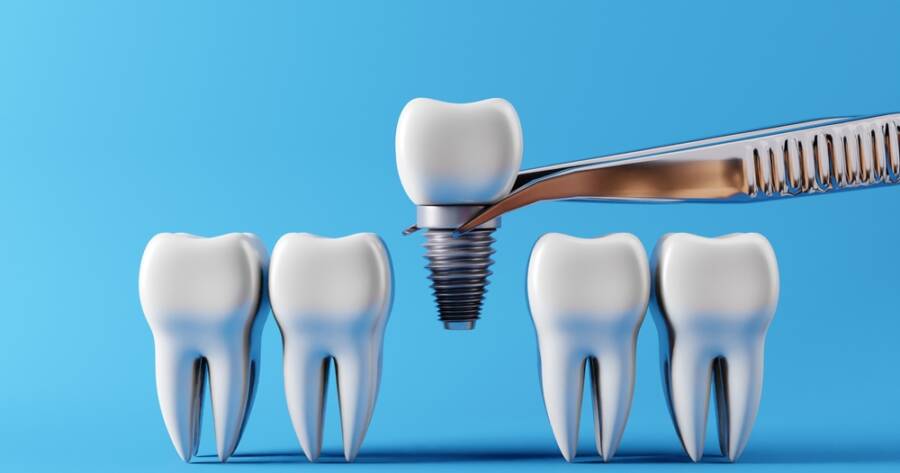Dental implants can transform a smile, restore oral function, and boost confidence. However, the cost often deters many people from pursuing this option. Fortunately, there are affordable alternatives and strategies to make dental implants more accessible. Keep in mind that affordability doesn’t have to compromise safety or effectiveness.
Understanding Dental Implant Costs
The cost of dental implants varies significantly depending on factors such as the number of implants needed, the type of procedure, and the location of the dental practice. In the U.S., a single implant can range from $3,000 to $7,000. These costs typically cover the implant itself, the abutment, and the crown.
Additional procedures like bone grafts or sinus lifts can increase the overall price. For those on a tight budget, understanding the breakdown of costs is crucial. Ask your provider for a detailed estimate and discuss whether all components are included. This can prevent unexpected expenses down the line.
Dental Schools Offering Implant Services
Dental schools often provide affordable implant services as part of their training programs. Students perform procedures under the supervision of licensed professionals, ensuring safety and quality. While the process may take longer than in a traditional clinic, the savings can be substantial. To find a participating dental school near you, check the American Dental Association’s (ADA) directory or inquire with local universities.
Dental Discount Plans
Unlike insurance, dental discount plans work by providing reduced rates on procedures through a network of participating providers. For a small monthly or annual fee, members can save on treatments, including implants.
These plans are widely available and often have no waiting periods or restrictions on pre-existing conditions. Before enrolling, ensure your preferred dentist participates in the program and compare plan details to find the best fit for your needs.
Nonprofit Organizations and Charitable Clinics
Nonprofit organizations and charitable dental clinics are another avenue for affordable dental care. Programs such as Donated Dental Services (DDS) connect eligible individuals with volunteer dentists who provide free or reduced-cost treatments, including implants.
These programs typically cater to seniors, individuals with disabilities, or those with financial hardships. While these services may have limited availability and long waitlists, they are worth exploring for those unable to afford traditional options.
Dental Tourism: Is It Worth It?
Dental tourism involves traveling abroad to receive dental care at significantly lower costs. Countries like Mexico, Costa Rica, Hungary, and Thailand are popular destinations for affordable dental implants. For example, the cost of a single implant in Mexico can be as low as $800, compared to thousands in the U.S.
When considering dental tourism, research is critical. Choose a reputable clinic with positive reviews and internationally accredited dentists. Factor in travel expenses, accommodation, and potential follow-up visits when calculating overall savings. While this option can be cost-effective, it requires careful planning to ensure safety and quality.
Financing and Payment Plans
Many dental practices offer financing options and payment plans to help patients manage the cost of implants. Third-party companies like CareCredit and LendingClub specialize in healthcare financing, allowing patients to pay for treatments over time with low or no-interest options.
Before committing to a payment plan, read the terms carefully, including interest rates and repayment timelines. This can help you avoid unexpected financial burdens and make implants more attainable within your budget.
Affordable Alternatives to Traditional Implants
For those unable to afford full dental implants, there are alternative solutions:
- Mini dental implants: Smaller and less invasive, mini implants cost significantly less than traditional ones. They are a suitable option for patients with minimal bone density.
- Implant-supported dentures: This hybrid solution combines dentures with implants for improved stability at a fraction of the cost of multiple implants.
- All-on-4 implants: This method uses only four implants to support a full arch of teeth, reducing the overall expense while maintaining functionality and aesthetics.
Discuss these alternatives with your dentist to determine which option aligns with your needs and budget.
Tips for Saving on Dental Implants
Here are some practical tips to make dental implants more affordable:
- Compare prices: Request quotes from multiple providers to find the best deal without compromising quality.
- Ask about promotions: Some clinics offer discounts or seasonal promotions on implants.
- Use health savings accounts (HSAs): If you have an HSA or Flexible Spending Account (FSA), you can use pre-tax dollars to cover dental implant costs.
- Negotiate: Some providers are open to negotiating costs or offering discounts for upfront payments.
- Consider group practices: Larger practices may have more competitive pricing due to higher patient volumes.
Learn More About Dental Implants
Dental implants don’t have to be out of reach, even on a limited budget. Exploring options like dental schools, nonprofit clinics, discount plans, and financing programs can help make this transformative procedure more accessible. For those willing to travel, dental tourism can provide substantial savings.
Additionally, alternative solutions like mini implants or All-on-4 systems offer cost-effective options without sacrificing functionality. Ultimately, thorough research, careful planning, and open communication with your dentist are essential to finding affordable implant solutions that meet your needs. With the right approach, a healthy, confident smile can be within reach.





